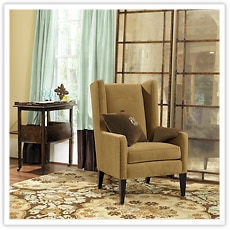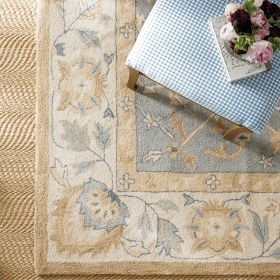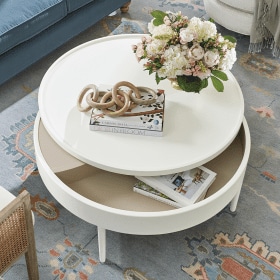
 On your shopping adventure you’ll discover rugs crafted from a variety of materials and constructed in a variety of ways, all resulting in different looks. Here’s a quick guide to rug materials and construction techniques.
On your shopping adventure you’ll discover rugs crafted from a variety of materials and constructed in a variety of ways, all resulting in different looks. Here’s a quick guide to rug materials and construction techniques.
Materials
Wool – By far the most common material used for rugs, wool is incredibly durable while remaining very soft to the touch. Wool’s energy-efficient properties make it a great year-round rug, too.
Natural Fibers – Jute, seagrass and sisal rugs are made from strong, coarse leaf fibers that add natural color and texture to your floor. They’re a super durable, eco-friendly choice for just about any style interior.
Cotton – Cotton rugs offer softness and a low-key look perfect for more relaxed settings, including children’s rooms. They’re also inexpensive, so you can easily replace them as you change your décor.
Synthetics – Crafted from materials like nylon, polypropylene and acrylic, synthetic rugs are available in just about every style, from Oriental to shag, at a fraction of the price. These machine-made rugs are stain- and weather-resistant.
 Construction
Construction
Hooked – Hooked rugs are produced by pushing yarn or fabric through a pre-woven or mesh foundation from back to front and front to back, creating a thick looped pile.
Tufted – Tufted rugs are produced the same way as a hooked rug, except the loops on top are snipped to create a cut pile that’s exceptionally soft.
Flat-woven – Having no pile, these rugs are quite literally flat. They’re lightweight, reversible and require a pad to prevent slippage underfoot.
Hand-knotted – Each piece of yarn is individually tied by hand. This meticulous process can take months to create a truly one-of-kind rug that will last a lifetime. Quality is measured in knots per square inch.
Needlepoint – The dense cross-stitch of pure wool resembles tapestry and results in a beautifully intricate, lightweight rug. Styles range from neoclassical to French country to English Jacobean.
Related story: How To Choose The Right Rug Size






